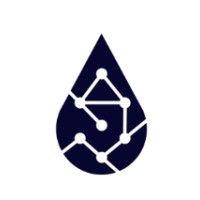Water Quality, Compliance, and Digital Transformation
Water utilities are under mounting pressure to secure, supply, and safeguard public health. The greatest potential lies in real-time quality monitoring and microbiological analytics, which are steadily replacing outdated manual and reactive systems. These technologies enable utilities to anticipate contamination risks, comply with stricter drinking water regulations, and assure customers of safe, reliable water access. By 2030, industry experts expect real-time analytics and digital water platforms to play a vital role in operations.
New applications are emerging, including advanced sensors embedded in distribution networks, predictive AI tools for contamination events, water reuse quality assurance, and portable water quality monitoring for remote areas. By 2050, nearly half of all water utility investment is forecast to focus directly on quality and compliance, with the remainder supporting efficiency and digital optimisation.
The Market Is Strong
Utilities and solution providers are investing heavily in digital water quality systems, supported by advances in smart sensors, microbiological testing, and cloud-based analytics platforms. A single monitoring station today can track dozens of parameters in real time, such as turbidity, pH, and microbial activity, ensuring compliance with health standards while detecting early signs of contamination.
Depending on network needs, multiple systems can be scaled and integrated into a decentralised quality control framework, enabling proactive action at both community and citywide levels. Alongside utilities, industrial water users and municipalities function as both technology suppliers and beneficiaries, contributing to a global, interconnected market. No region is fully self-sufficient in managing water quality challenges, which is why international collaboration remains critical.
Ensuring Compliance Requires Innovation
Real-time water quality monitoring is at the heart of a resilient utility sector. Advances in microbiological analytics enable utilities to detect pathogens faster and more accurately than ever before. Smart water grids are fitted with sensors capable of predicting contamination before it develops into a public health risk. At the same time, digital platforms provide utilities with predictive insights, ensuring they can balance cost, compliance, and quality.
Transport and distribution infrastructure will require ongoing upgrades, as older networks face issues such as leakage, contamination entry points, and material degradation. Regions with growing populations and stressed water resources are coming into focus, where investment in quality assurance is vital for long-term resilience.
At European Smart Water Utilities 2026, companies will present solutions and products that secure water quality and compliance in a rapidly changing world.













